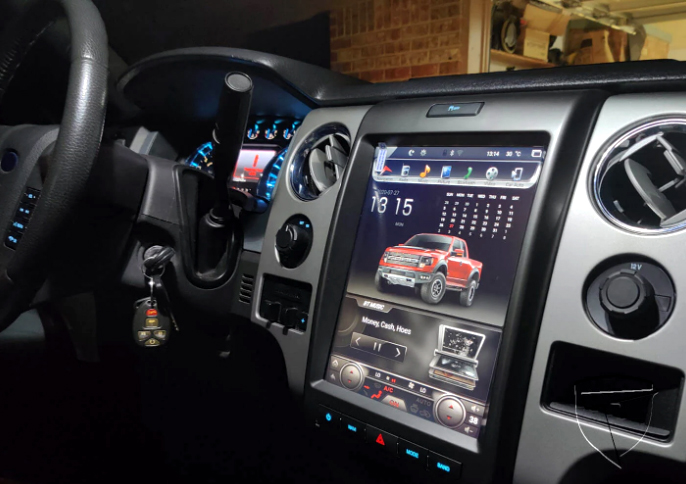Redefining Space Defense In The Digital Age

Kelle Wendling Space Systems, President, L3Harris Technologies.
The missile flies at more than one mile per second, or five times the speed of sound. It skims along the edge of Earth’s atmosphere, focused on a target just minutes away. With a lethal combination of speed, maneuverability and reach, it’s nearly impossible to detect with today’s radar networks and satellite systems, making it very close to unstoppable.
It may sound futuristic, but the age of hypersonic weapons is already here, changing the landscape of modern warfare right before our eyes. Russia is said to have used one for the first time in its war on Ukraine during a strike on Kyiv. China currently possesses the world’s largest hypersonic weapons arsenal.
“The threats we’ve been talking about for years are no longer theoretical possibilities,” said Space Force Gen. Stephen Whiting, commander of U.S. Space Command, at the 2024 Space Symposium. “They hold at risk our modern way of life and how we defend this nation. And we must be able to deter and counter these threats when called upon to achieve space superiority.”
The United States and its allies are moving quickly to confront this new reality. Recent developments include the newly announced partnership between the U.S. and Japan to develop a hypersonic missile interceptor, as well as the U.S. Space Force’s plans to direct the bulk of its fiscal year 2025 budget toward hypersonic missile warning and tracking satellites.
These developments, while promising, are just a small part of a broader and necessary paradigm shift underway. To stay ahead of evolving threats like hypersonic weapons in the congested and contested space domain, I believe the space and defense communities need to go farther, faster. The government and our industry must embrace tighter collaboration, faster decision-making and continual innovation to provide warfighters with new capabilities on timelines relevant to national defense.
Commit to transparency.
Given the sensitive nature and high stakes of this work, it’s tempting to default to secrecy and hierarchical norms to protect our competitive edge and proprietary information. However, in the highly dynamic and complex space defense domain, this is counterproductive.
To drive progress on new technologies quickly, all stakeholders must operate from a common foundation of ideas and information. Transparency lies at the heart of this pursuit, starting with the establishment of clear communication channels and protocols. By proactively sharing information, we help build a culture of trust and accountability, which in turn spurs innovation. By leveraging technology solutions such as secure data-sharing platforms, we can collaborate freely while maintaining high levels of confidentiality and security.
Share the risks.
When it comes to developing technologies for a new space era, it’s all about agility. Yesterday’s command-and-control approach will not give us the speed to stay ahead of emerging threats. Instead, we must embrace a shared risk-based approach in which all stakeholders collaborate to assess, manage and mitigate risks associated with a particular course of action. By drawing on various perspectives and expertise and involving multiple parties in decision-making, this approach can instill a shared sense of ownership, accountability and commitment to success.
But what happens when stakeholders tend to have differing risk tolerance levels, as is so often the case? To avoid decision delays, disagreements and other challenges, it’s critical to establish clear criteria for evaluating and mitigating risks, as well as leverage data wherever possible to provide objective insights. Open dialogue, willingness to compromise and active engagement can further bridge differences and help align efforts toward common goals.
Iterate to innovate.
Today’s highly dynamic threat environment demands that we execute as if on wartime footing. That means leaning harder into advanced techniques such as artificial intelligence and machine learning (AI/ML), digital engineering and rapid prototyping to accelerate the development of critical technology at the speed of relevance.
The good news is that the democratization of technology over the past decade gives us a tremendous opportunity to move away from costly, bespoke solutions in favor of more modular, cloud-based systems that can be rapidly upgraded as new threats emerge.
We also need to seize opportunities to optimize cumbersome processes that impede progress. My company, L3Harris, for example, designed and built five new missile tracking satellites for the Space Development Agency (SDA) and Missile Defense Agency (MDA) in just over three years, thanks in part to the government’s use of Other Transaction Authorities (OTA). Such non-traditional acquisition models help cut the red tape and increase flexibility, enabling faster decision-making and development cycles. I expect increased use of OTAs to spur innovation in the years to come.
As we enter a turbulent new space era, one thing is clear: Government and industry stakeholders must evolve to keep pace. By uniting around common goals, collaborating to challenge the status quo and embracing innovation every step of the way, we can remain at the forefront of space-based defense to safeguard our nation’s security for generations to come.
Forbes Technology Council is an invitation-only community for world-class CIOs, CTOs and technology executives. Do I qualify?
link






